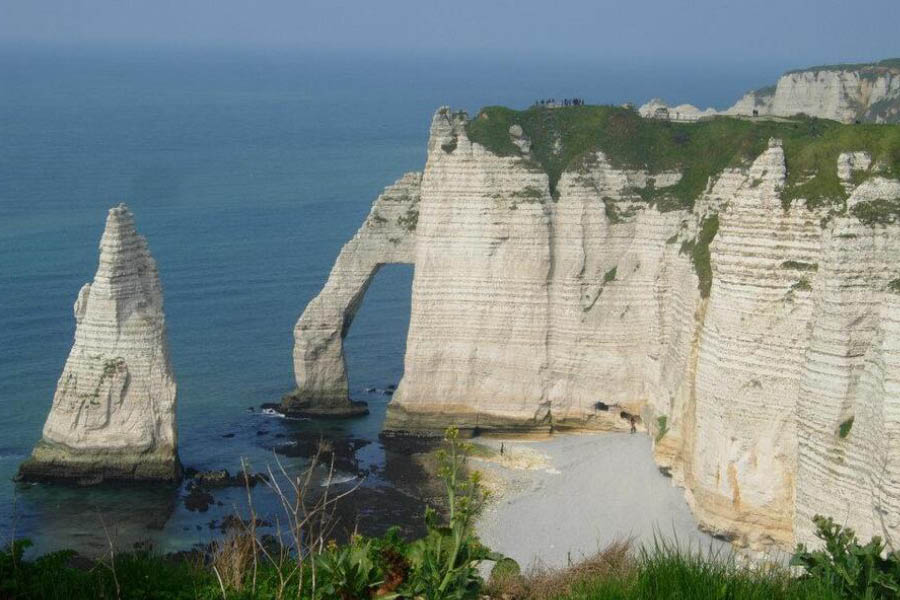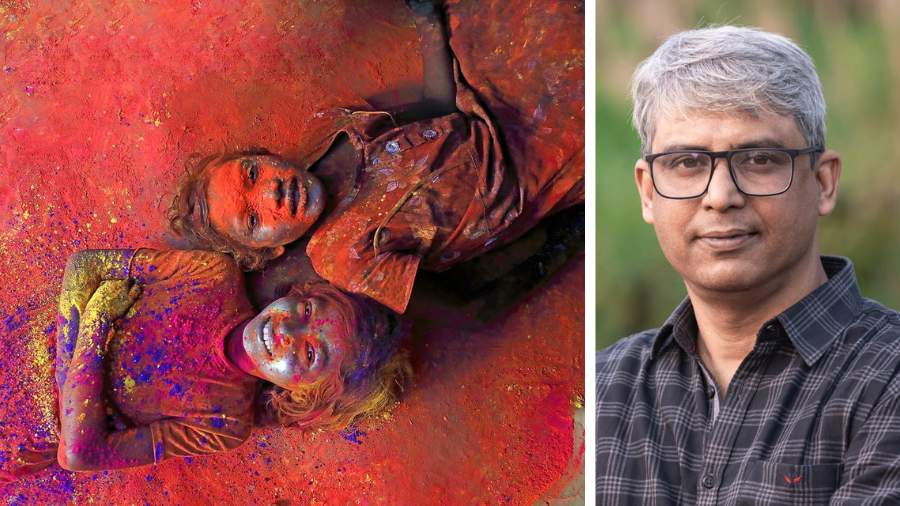Four decades of spanning across South Asia could not satiate veteran photojournalist Jayanta Shaw’s passion for negatives and positives. For the past half-a-decade, the Kolkata-based imagery wizard has switched to alternative photography, a method of photography using old equipment and technique. He is using box cameras and photosensitive plates.
The inspiration
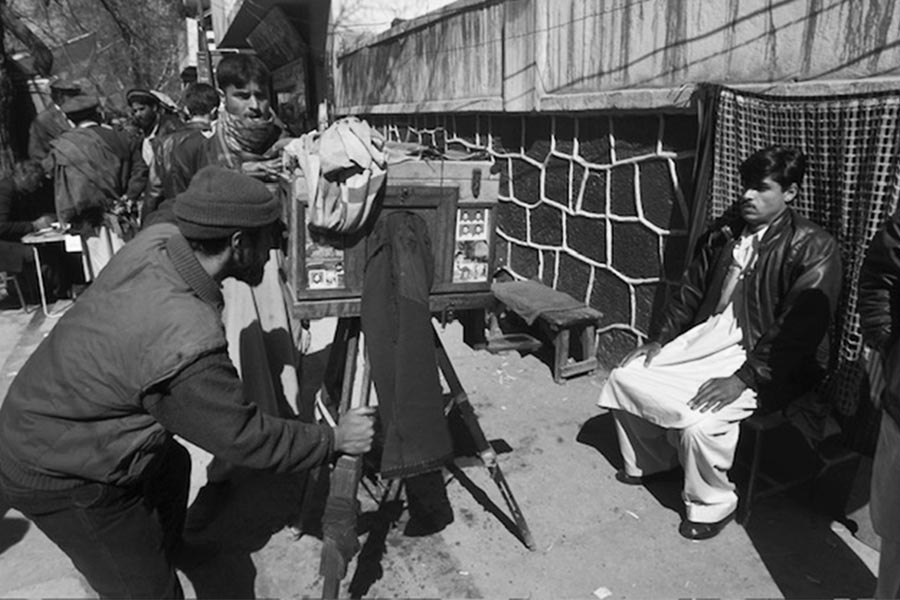
Scene from Passport Street, Kabul, Afghanistan Jayanta Shaw
During the yearly years of the new millennium, Shaw was on a photography assignment in Kabul, Afghanistan. Shaw narrates: “It was a Reuters assignment. In Kabul’s Passport Street, I saw dozens of photographers clicking photos with large box cameras measuring roughly 2.5ft x 1.5ft x 1.5ft.” A brief conversation with the photographers revealed that these cameras are known as Afghan box cameras and come in with built-in dark room. The photographer initially clicked a photo (usually a portrait of a person). The photo paper is processed and the negative obtained. The negative is then clicked and the photo (known as positive) obtained. It follows the basic mathematical principle of ‘a negative of a negative is positive’. Shaw further adds: “Although called Afghan box cameras, these cameras has been used worldwide and is still used in Jaipur by Tikam Chand, who has recently been turned into a celebrity by social media influencers.”
The beginning
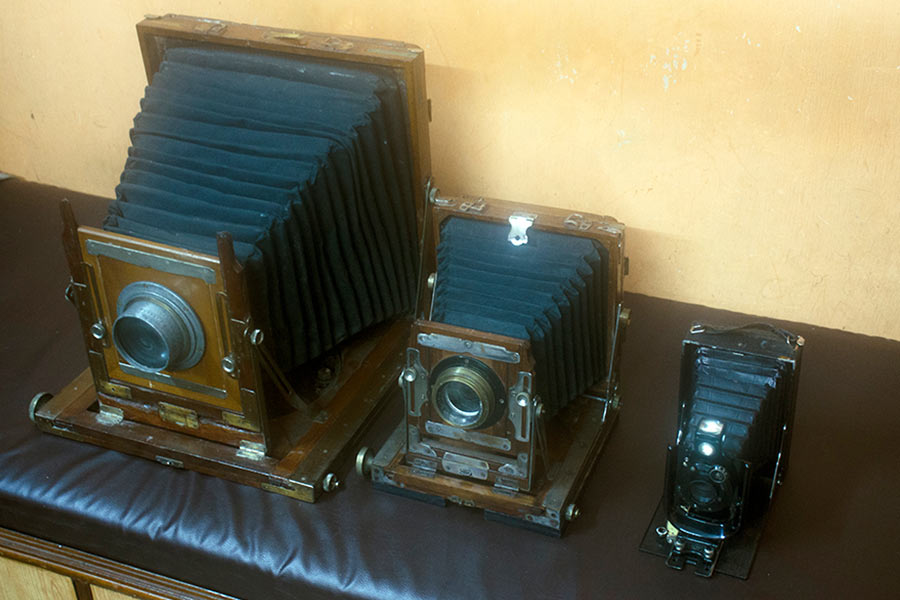
(From left) Full, half and quarter format cameras
Although inspired by the Afghan experience, Shaw had to keep up with his professional commitments and the box camera photography took a backseat. It was only in 2019 that his old interest was rekindled. With the help of friends and veteran photographers, he made his first box camera. Shaw says: “It was a slight modification of the pin-hole camera, which middle school students make for school physics assignments. Only the pin hole was replaced by a lens and the tracing paper was replaced by photosensitive paper. The other difference was that the box comprised two light tight sliding compartments, which could be moved to get the focus.” The camera did produce photos but Shah was not satisfied and decided to collect old cameras.
Getting the cameras
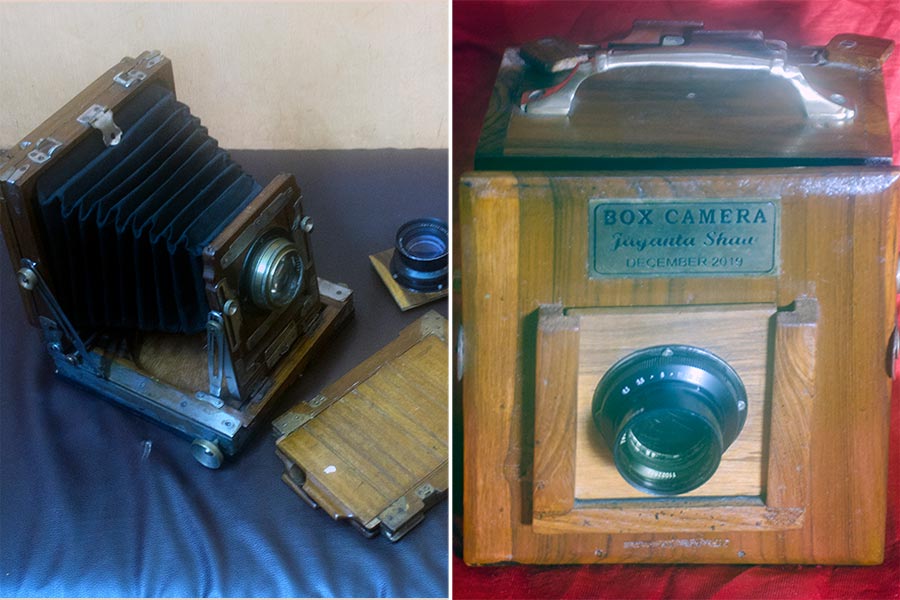
A half format camera with film case and extra lens and (right) a self-made box camera
Getting the old cameras was no easy task and getting them back to working condition was almost impossible. Shaw says: “I knew my fellow photographer, Abhijeet Roy’s father, Gandhi Roy, was a photographer and had an old wooden box camera. I approached Abhijeet and he asked for a couple of days’ time to find it. A few days later, he informed me that the entire wooden box and the tripod had been eaten up by termites!”
Shaw continues: “The lens with its metal case and cover was the only thing that survived.” But that was not enough to dampen Shaw’s spirit and he traced down an old camera repair technician in Sonarpur. Shaw says: “Tarak babu of Sonarpur is a master at repairing old cameras and he recreated the entire camera complete with the wooden box and bellow and fitted the old lens.”
Today, it is functional making up a part of Shaw’s collection. Next, two smaller cameras were collected from Picto Palace Studio, Beadon Street, north Kolkata. Shaw adds: “Most of the cameras I collected were not in working condition and many cases parts were missing. So, I had to improvise. I instructed wood workers in Chitpore to make wooden film cases and other accessories to make the camera functional.” Today, Shaw has a huge old camera collection and the amazing part is that most of them are functional and are used on a regular basis.
Camera collection
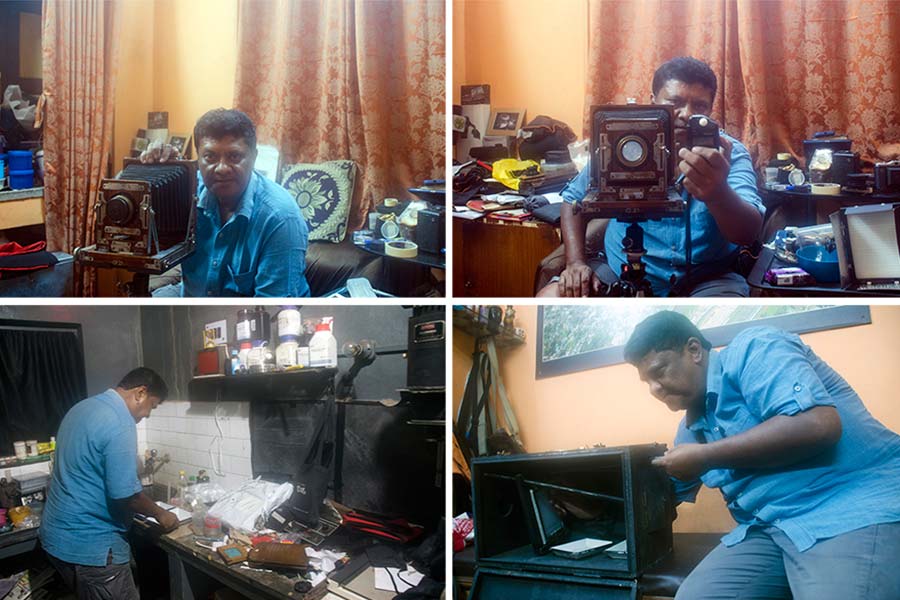
(Clockwise from top left) Shaw setting up his box camera; using a light meter to get the exposure; working in his dark room; setting up his self-made Afghan box camera
Shaw has a huge collection of box cameras. Unlike the one he made, most of his box cameras contain a bellow and can be folded into a sheet less than an inch thick. This provides portability and helps in easy transportation. The box cameras come in different sizes, which is known as format. The format depends on the size of film loaded on the camera. The full format has paper size of 10 inches by 12 inches. The half and quarter format have film size of 6 inches by 8 inches and 4 inches by 5 inches respectively. Shaw’s collection extends beyond the plate and box formats and includes twin lens reflex (TLR) film cameras. Another of his prized possessions is a self-made Afghan film camera complete with built-in dark room.
Practising alternative photography

: Jayanta Shaw working on portraits with his box camera. The famous photographer Raghu Rai (top left) is being photographed Jayanta Shaw
Alternative photography is the method of photography using age-old methods. It is quite popular in the developed countries. In India, it is slowly picking up. According to Shaw: “Getting a functional old camera is only the initial part. Films (chemical coated paper or glass plates) are difficult to get and so are processing chemicals.” Shaw has been more of a self-taught man but he did get help from his fellow photographers. An expected help come from fellow alternative photographer Lukas Birk, who has co-authored a book titled Afghan Box Camera. Shaw and Birk got connected via Instagram and during Birk’s recent visit to Kolkata both had long sessions on the vintage cameras and exchanged ideas and thoughts. Shaw’s work mainly focuses on portrait photography.
Shaw mentions, “These old cameras require a long exposure and the person being photographed needs to sit or stand still for 4/5 seconds. A slight movement can ruin the entire shot.” He usually tries to blend his subject with an appropriate back ground. For example, he has shoot weeding photos of brides and grooms in typical bonedi bari’s of Kolkata. He has shot portraits of the famous photographer Raghu Rai, with the Howrah bridge in background. He has done a series on circus artist thus capturing a vanishing art using vanishing technology.
Blending age-old photography with modern technology
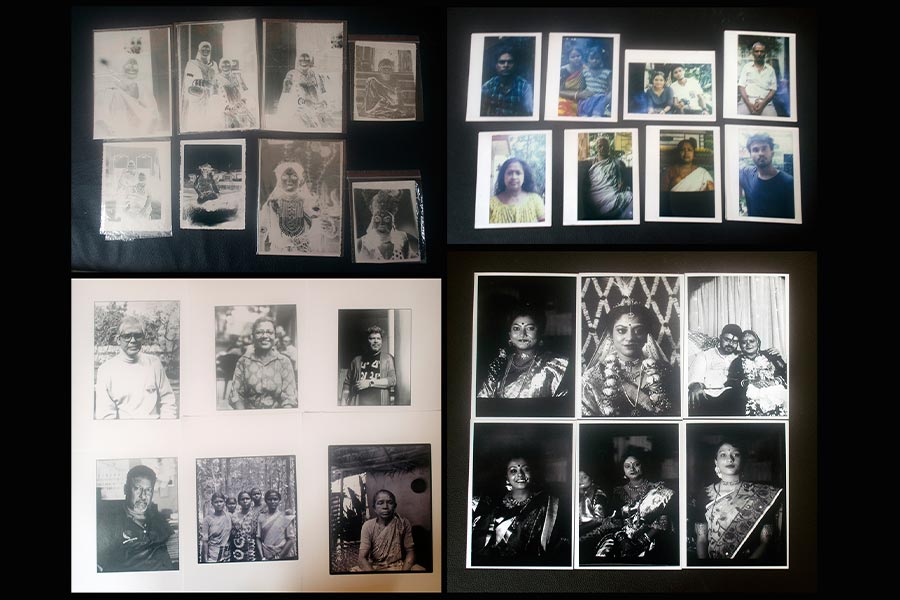
Negatives and positives shot with different box cameras. Clockwise from top left – paper negatives; prints on Polaroid paper; medium size positive; large size positives
Most practising alternative photographers take advantage of modern technology, including digital photography. Shaw uses a free phone app known as Kodak Film Scanner to convert negatives to positives (positive refers to the photo we are used to see). Also Shaw has used Polaroid films in box cameras to create instant photos. Shaw also uses a digital light meter to get his exposure.
Road ahead
Shaw plans an exhibition of his photographs but presently is concerned about the budget. He adds: “Getting large prints is expensive, so is framing those. Venue cost and other overheads are to be added. Presently, I have already spent a fortune on old cameras and this type of photography has a continuous recurring cost. So I am on the lookout for sponsors for the exhibition.”
Shaw has a more ambitious plan and wants to trace the route of photographer Samuel Bourne. Bourne, along with Shepherd, ran the famous Bourne & Shepherd Studio in Kolkata’s Esplanade. Bourne spent seven (1864-71) years in India and made several expeditions to the Himalayas with his large box cameras and Shaw wants to follow his footsteps. Shaw says: “I am presently thinking of the Spiti part only and will carry quarter format folding box cameras along with dry chemicals for on-spot development. It requires as a lot of planning and funds. A fellowship would be extremely helpful.”

